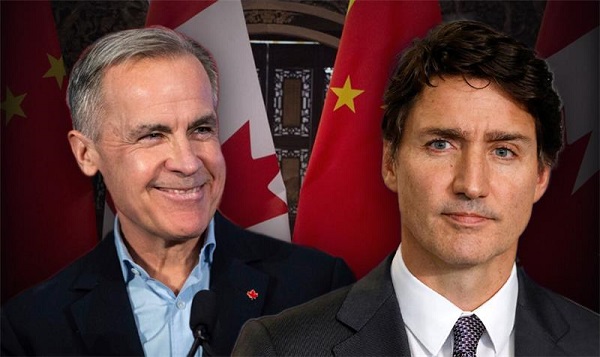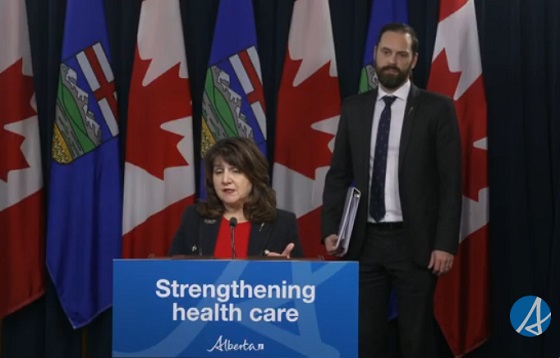Alberta
A misinformation bubble in action—Egale Canada v. Alberta

By Geoffrey Sigalet for Inside Policy
Justice Kuntz completely set aside the question of whether the medical benefits of these procedures are supported by evidence… That these identities are highly fluid, and the adverse consequences of pursuing these procedures are serious and irreversible, was ostensibly of little to no importance
A pair of recent judicial rulings – one in Canada and the other in the United States, both on the matter of gender medicine – saw the courts reach dramatically different conclusions. But each case tells the story of the yet-to-be-burst “liberal misinformation bubble” that exists around this issue.
On June 18, 2025, the United States Supreme Court issued its long-awaited decision in United States v. Skrmetti. A 6-3 majority upheld Tennessee’s ban on puberty blocking drugs, cross-sex hormones, and sex reassignment surgeries for minors.
Nine days later, Justice Allison Kuntz – who was appointed to the Alberta Court of King’s Bench by the federal government in 2023 – issued an interlocutory decision in Egale Canada v. Alberta. It’s a case brought to challenge Alberta’s controversial Health Statutes Amendment Act 2024 (the HSAA), which would have implemented the province’s own restrictions on puberty blockers, cross-sex hormones, and sex transition surgeries for minors. The decision granted an interim injunction to prevent certain sections of the law from coming into force while the legal challenge is heard.
Advocacy groups have celebrated Justice Kuntz’s ruling as a landmark win. For now, there remain reasons for them to be optimistic she will also decide the case’s merits very differently from the majority in Skrmetti. However, in the big picture, that confidence may not be warranted given mounting evidence against their cause and the options open to Alberta.
 Indeed, to say the Egale and Skrmetti decisions are worlds apart is to state the obvious. But while it is tempting to explain the diverging outcomes by reference to the distinct legal regimes in place in the US and Canada, such a conclusion ignores significant similarities between the factual and procedural context of the American and Canadian cases.
Indeed, to say the Egale and Skrmetti decisions are worlds apart is to state the obvious. But while it is tempting to explain the diverging outcomes by reference to the distinct legal regimes in place in the US and Canada, such a conclusion ignores significant similarities between the factual and procedural context of the American and Canadian cases.
Notably, there was a request for an interlocutory injunction in both the Egale Canada and Skrmetti cases. All the more striking, the United States District Court initially awarded the injunction in Skrmetti before the Sixth Circuit overturned it on appeal.
Moreover, the evidence tendered in both cases was fundamentally similar. Ultimately, the differing outcomes can be attributed primarily to the manner in which the judges interpreted evidence before them, and especially the assumptions they brought to bear in their analysis.
In Skrmetti, a majority of the Sixth Circuit and US Supreme Court judges straightforwardly appreciated the significant evidence that’s accrued demonstrating the harm caused by these interventions, and the continuing lack of evidence regarding benefits. For her part, Justice Kuntz, like the dissenting American judges in Skrmetti, took the administration of puberty blockers, cross-sex hormones, and sex transition surgeries on minors to be, if not an absolute good, then at least a good that strongly outweighs potential adverse consequences.
In both cases, their assessments appear to reflect what journalist Helen Lewis of The Atlantic has recently labelled a “liberal misinformation bubble” – in which assumptions concerning these procedures’ benefits and risks remain frozen in time, while evidence of harm mounts and a lack of evidence of benefits becomes clearer.
As Lewis’ exposé highlights, and as others have also noted, there is in fact almost no evidence to support these interventions’ claimed benefits. Moreover, what evidence exists has been cast into doubt by revelations – including in documents obtained through discoveries in an Alabama case – that the organizations setting standards of care and commissioning most research have been compromised by a political commitment to what they tellingly call “gender-affirming care.” Even the claim that these interventions are necessary to avert suicide in trans-identifying minors – once the primary argument made by supporters, and still often invoked against detractors, including in a recent Globe and Mail editorial – has little to no evidentiary support. In fact, the lack of supporting evidence for this claim was even conceded by counsel arguing against the Tennessee law in Skrmetti.
While claims of benefits appear dubious and politically motivated, the evidence of harm, meanwhile, continues to mount. Notably, just as the US Supreme Court’s decision in Skrmetti was about to be released, a new paper was published outlining the serious long-term health complications caused by administering estrogen to biological males. These findings only added to the known long-term consequences of administering puberty blocking drugs and cross-sex hormones to minors, which can include permanent infertility, anorgasmia, bone density loss, and other permanent physiological changes.
Consistent with Lewis’ thesis, these developments have been resisted by large swaths of the political left in the United States and elsewhere. Such resistance to this information is also evident in the dissenting judges’ assertions in Skrmetti, who continue to characterize these procedures as a “question of life or death” despite the absence of evidence.
But even they (the dissenting judges) did not go quite as far as Justice Kuntz in Egale, particularly in her analysis of whether the plaintiffs would suffer irreparable harm if an injunction was not granted. In Justice Kuntz’s estimation, “[t]he evidence shows that the Ban will cause irreparable harm by causing gender diverse youth to experience permanent changes to their body that do not align with their gender identity.” To this, she adds in the very next paragraph: “the evidence shows that singling out health care for gender diverse youth and making it subject to government control will cause irreparable harm to gender diverse youth by reinforcing the discrimination and prejudice that they are already subjected to. Intentionally or not, the Ban will signal that there is something wrong with or suspect about having a gender identity that is different than the sex you were assigned at birth.”
These statements suggest that Justice Kuntz completely set aside the question of whether the medical benefits of these procedures are supported by evidence. Instead, she appears to have taken it as a given that “gender diverse youth” have an innate and immutable gender identity and will suffer irreparable injury if they are simply allowed to go through a natural puberty. That these identities are highly fluid, and the adverse consequences of pursuing these procedures are serious and irreversible, was ostensibly of little to no importance at this stage of her analysis. Meanwhile, her findings assume these restrictions would increase discrimination and prejudice towards children experiencing gender dysphoria – even if no evidence was tendered to support this conclusion.
The confidence with which Justice Kuntz reaches these conclusions is all the more remarkable. A ruling on a preliminary injunction requires only a “high degree of probability,” yet she speaks with apparent certainty when she asserts “there will be irreparable harm to transgender youth if an injunction is not granted.” In fact, there is a tension between the certainty of this statement, and her own recognition earlier in her ruling that the “merits” of the parties’ expert evidence regarding hormone therapy “cannot be, nor should they be, resolved on this application.”
Moreover, unlike other recent Charter cases in which Canadian courts have issued interlocutory injunctions on dubious grounds – such as the prohibition on drug use in public parks in British Columbia, and the removal of bike lanes in Toronto – the Egale case is not even an instance that pits the purported “harm” faced by a discrete group of persons against the broader good of the community. The individuals involved in Egale – minor children – are the very same persons for whose benefit the Alberta legislature has intervened. On balance, it was thus entirely reasonable for Alberta’s legislative measures to be allowed to come into force, so as to prevent further harm being done to some of the most vulnerable members of society until such time as a full hearing could be given to the merits of the case.
To be fair, in her later discussion of the “balance of convenience” – the court’s assessment of whether granting or refusing the injunction would cause greater harm – Justice Kuntz addresses Alberta’s argument that the HSAA’s relevant sections in fact prevent harm. But even considering these nuances, the judge’s analysis still succumbs to the “liberal misinformation bubble” Lewis identified. To contradict Alberta’s evidence on this argument, the justice leans on “the professional standards of Alberta’s health-care professions,” which she suggests will be sufficient to counteract the harms raised by Alberta while awaiting a decision on the merits. However, this conclusion ignores a key factor that Lewis highlights, and which Alberta presented: the claim that the medical profession has been politicized on this issue, and its professional standards are therefore not trustworthy.
Furthermore, Justice Kuntz mischaracterizes the evidence about the types of harm Alberta’s legislation is meant to address, by claiming that it is only meant to benefit “the small group of people” who are prescribed hormone therapy and “later regret it.” In reality, Alberta’s evidence shows its policies are meant to mitigate a host of serious health risks, including for those minors who later in life do not regret transitioning. If the administration of cross-sex hormones to minors unacceptably increases the risk of sterility, bone density deterioration, or other health risks, it will do so both for minors who detransition and those who do not.
Finally, these mischaracterizations of the harms that would be caused and prevented by the HSAA are further exacerbated by Justice Kuntz’s decision to pre-emptively block the relevant sections, instead of waiting to prohibit their operation once already in force. Her decision results from a clever choice made by Egale Canada to proactively challenge the relevant provisions of the HSAA prior to their coming into force. This allowed the law to be considered without accompanying ministerial orders the Alberta government had announced. These would have notably included an order allowing the administration of cross-sex hormones in exceptional cases, such as where children are already in the midst of the intervention, or where minors aged 16-17 have parental, physician, and psychologist approval. By excluding the order from the court’s consideration, Egale was able to make a superficially more compelling case against the law, arguing it was not tailored to the complex needs of children experiencing gender dysphoria.
Under these circumstances, it would at minimum have been much more appropriate for Justice Kuntz to exercise her judicial discretion to refuse an injunction, until such a time as the ministerial orders were issued and a full accounting of the HSAA’s impacts could be made. After all, no one was being irreparably harmed by legislation not in force. It was certainly plausible that the proclamation and ministerial orders would have reduced the risk of irreparable harm that Justice Kuntz identified. This is to say nothing of the possibility that Justice Kuntz may have acted in a manner contrary to law, and contrary to the constitution, in preventing the law’s coming into force in this way. Notably, the Supreme Court has held that Canadian courts are not to issue “private references” about potential legal issues. Less than four years ago, the Alberta Court of Appeal further held in somewhat analogous circumstances that it was inappropriate for the King’s Bench to hear a constitutional challenge to the Kenney government’s Critical Infrastructure Defence Act based on only “hypothetical scenarios”.
Justice Kuntz’s reasoning is unfortunate. It suggests a failure to grasp the core issues underlying the HSAA’s contested provisions. It abdicates the pressing need to protect minors from unnecessary, irreversible, and potentially devasting interventions that the medical profession has, for one reason or another, failed to adequately regulate on its own. Moreover, it poses a serious risk of undermining public confidence in the administration of justice. As polls have confirmed, a majority of people in Alberta – and across Canada – are supportive of either full or partial restrictions on puberty blockers, cross-sex hormones, and sex reassignment surgeries for minors. A decision like this one will inevitably be seen as an instance of judicial overreach into the realm of provincial democratic decision-making, aligning with the beliefs of the federal Liberal government which has made no secret of its eagerness to see courts strike down this law.
In the aftermath of Justice Kuntz’s decision, Alberta is left with two options which it may wish to pursue simultaneously. One is to appeal the injunction, including the claim that the HSAA’s coming into force can be pre-emptively halted. The other is to re-enact the relevant sections of the HSAA, ideally while invoking Section 33 of the Charter – also known as the notwithstanding clause or parliamentary supremacy clause. The great Alberta premier Peter Lougheed most notably championed the clause to address instances of Ottawa-appointed judges overstepping their legitimate authority or making serious errors of judgement affecting provincial jurisdiction. By invoking Section 33 to protect its own interpretation of Charter rights, Alberta would be following the intentions of one of the key architects of the notwithstanding clause.
As a practical matter, the first option may take too long and will become moot if amendments are implemented. But the second option presents challenges of its own. Particularly if Section 33 is invoked, such action would no doubt give rise to what have become entirely predictable protests by members of the Canadian legal and political establishment who view the clause as an illegitimate device used by governments to violate rights. In the context of Egale, specifically, establishment opposition to Section 33 will only be reinforced by the “liberal misinformation bubble” which continues to surround the medical transition of minors.
However, this establishment outrage is becoming a less effective constraint as electorates become more comfortable with provincial invocations of Section 33 to contest judicial decisions offside with common sense. Voters recently re-elected governments in Saskatchewan and Ontario that had invoked Section 33.
When combined with the serious harms caused by the interventions at issue, the Alberta government has a strong mandate to move forward in the hope this misinformation bubble will finally burst.
Geoffrey Sigalet is a senior fellow at the Macdonald-Laurier Institute, director of the UBC Research Group for Constitutional Law, and an assistant professor of political science at the University of British Columbia Okanagan.
Alberta
Alberta can’t fix its deficits with oil money: Lennie Kaplan

This article supplied by Troy Media.
Alberta is banking on oil to erase rising deficits, but the province’s budget can’t hold without major fiscal changes
Alberta is heading for a fiscal cliff, and no amount of oil revenue will save it this time.
The province is facing ballooning deficits, rising debt and an addiction to resource revenues that rise and fall with global markets. As Budget 2026 consultations begin, the government is gambling on oil prices to balance the books again. That gamble is failing. Alberta is already staring down multibillion-dollar shortfalls.
I estimate the province will run deficits of $7.7 billion in 2025-26, $8.8 billion in 2026-27 and $7.5 billion in 2027-28. If nothing changes, debt will climb from $85.2 billion to $112.3 billion in just three years. That is an increase of more than $27 billion, and it is entirely avoidable.
These numbers come from my latest fiscal analysis, completed at the end of October. I used conservative assumptions: oil prices at US$62 to US$67 per barrel over the next three years. Expenses are expected to keep growing faster than inflation and population. I also requested Alberta’s five-year internal fiscal projections through access to information but Treasury Board and Finance refused to release them. Those forecasts exist, but Albertans have not been allowed to see them.
Alberta has been running structural deficits for years, even during boom times. That is because it spends more than it brings in, counting on oil royalties to fill the gap. No other province leans this hard on non-renewable resource revenue. It is volatile. It is risky. And it is getting worse.
That is what makes Premier Danielle Smith’s recent Financial Post column so striking. She effectively admitted that any path to a balanced budget depends on doubling Alberta’s oil production by 2035. That is not a plan. It is a fantasy. It relies on global markets, pipeline expansions and long-term forecasts that rarely hold. It puts taxpayers on the hook for a commodity cycle the province does not control.
I have long supported Alberta’s oil and gas industry. But I will call out any government that leans on inflated projections to justify bad fiscal choices.
Just three years ago, Alberta needed oil at US$70 to balance the budget. Now it needs US$74 in 2025-26, US$76.35 in 2026-27 and US$77.50 in 2027-28. That bar keeps rising. A single US$1 drop in the oil price will soon cost Alberta $750 million a year. By the end of the decade, that figure could reach $1 billion. That is not a cushion. It is a cliff edge.
Even if the government had pulled in $13 billion per year in oil revenue over the last four years, it still would have run deficits. The real problem is spending. Since 2021, operating spending, excluding COVID-19 relief, has jumped by $15.5 billion, or 31 per cent. That is nearly eight per cent per year. For comparison, during the last four years under premiers Ed Stelmach and Alison Redford, spending went up 6.9 per cent annually.
This is not a revenue problem. It is a spending problem, papered over with oil booms. Pretending Alberta can keep expanding health care, education and social services on the back of unpredictable oil money is reckless. Do we really want our schools and hospitals held hostage to oil prices and OPEC?
The solution was laid out decades ago. Oil royalties should be saved off the top, not dumped into general revenue. That is what Premier Peter Lougheed understood when he created the Alberta Heritage Savings Trust Fund in 1976. It is what Premier Ralph Klein did when he cut spending and paid down debt in the 1990s. Alberta used to treat oil as a bonus. Now it treats it as a crutch.
With debt climbing and deficits baked in, Alberta is out of time. I have previously laid out detailed solutions. But here is where the government should start.
First, transparency. Albertans deserve a full three-year fiscal update by the end of November. That includes real numbers on revenue, expenses, debt and deficits. The government must also reinstate the legal requirement for a mid-year economic and fiscal report. No more hiding the ball.
Second, a real plan. Not projections based on hope, but a balanced three-year budget that can survive oil prices dropping below forecast. That plan should be part of Budget 2026 consultations.
Third, long-term discipline. Alberta needs a fiscal sustainability framework, backed by a public long-term report released before year-end.
Because if this government will not take responsibility, the next oil shock will.
Lennie Kaplan is a former senior manager in the fiscal and economic policy division of Alberta’s Ministry of Treasury Board and Finance, where, among other duties, he examined best practices in fiscal frameworks, program reviews and savings strategies for non-renewable resource revenues. In 2012, he won a Corporate Values Award in TB&F for his work on Alberta’s fiscal framework review. In 2019, Mr. Kaplan served as executive director to the MacKinnon Panel on Alberta’s finances—a government-appointed panel tasked with reviewing Alberta’s spending and recommending reforms.
Alberta
IEA peak-oil reversal gives Alberta long-term leverage

This article supplied by Troy Media.
The peak-oil narrative has collapsed, and the IEA’s U-turn marks a major strategic win for Alberta
After years of confidently predicting that global oil demand was on the verge of collapsing, the International Energy Agency (IEA) has now reversed course—a stunning retreat that shatters the peak-oil narrative and rewrites the outlook for oil-producing regions such as Alberta.
For years, analysts warned that an oil glut was coming. Suddenly, the tide has turned. The Paris-based IEA, the world’s most influential energy forecasting body, is stepping back from its long-held view that peak oil demand is just around the corner.
The IEA reversal is a strategic boost for Alberta and a political complication for Ottawa, which now has to reconcile its climate commitments with a global outlook that no longer supports a rapid decline in fossil fuel use or the doomsday narrative Ottawa has relied on to advance its climate agenda.
Alberta’s economy remains tied to long-term global demand for reliable, conventional energy. The province produces roughly 80 per cent of Canada’s oil and depends on resource revenues to fund a significant share of its provincial budget. The sector also plays a central role in the national economy, supporting hundreds of thousands of jobs and contributing close to 10 per cent of Canada’s GDP when related industries are included.
That reality stands in sharp contrast to Ottawa. Prime Minister Mark Carney has long championed net-zero timelines, ESG frameworks and tighter climate policy, and has repeatedly signalled that expanding long-term oil production is not part of his economic vision. The new IEA outlook bolsters Alberta’s position far more than it aligns with his government’s preferred direction.
Globally, the shift is even clearer. The IEA’s latest World Energy Outlook, released on Nov. 12, makes the reversal unmistakable. Under existing policies and regulations, global demand for oil and natural gas will continue to rise well past this decade and could keep climbing until 2050. Demand reaches 105 million barrels per day in 2035 and 113 million barrels per day in 2050, up from 100 million barrels per day last year, a direct contradiction of years of claims that the world was on the cusp of phasing out fossil fuels.
A key factor is the slowing pace of electric vehicle adoption, driven by weakening policy support outside China and Europe. The IEA now expects the share of electric vehicles in global car sales to plateau after 2035. In many countries, subsidies are being reduced, purchase incentives are ending and charging-infrastructure goals are slipping. Without coercive policy intervention, electric vehicle adoption will not accelerate fast enough to meaningfully cut oil demand.
The IEA’s own outlook now shows it wasn’t merely off in its forecasts; it repeatedly projected that oil demand was in rapid decline, despite evidence to the contrary. Just last year, IEA executive director Fatih Birol told the Financial Times that we were witnessing “the beginning of the end of the fossil fuel era.” The new outlook directly contradicts that claim.
The political landscape also matters. U.S. President Donald Trump’s return to the White House shifted global expectations. The United States withdrew from the Paris Agreement, reversed Biden-era climate measures and embraced an expansion of domestic oil and gas production. As the world’s largest economy and the IEA’s largest contributor, the U.S. carries significant weight, and other countries, including Canada and the United Kingdom, have taken steps to shore up energy security by keeping existing fossil-fuel capacity online while navigating their longer-term transition plans.
The IEA also warns that the world is likely to miss its goal of limiting temperature increases to 1.5 °C over pre-industrial levels. During the Biden years, the IAE maintained that reaching net-zero by mid-century required ending investment in new oil, gas and coal projects. That stance has now faded. Its updated position concedes that demand will not fall quickly enough to meet those targets.
Investment banks are also adjusting. A Bloomberg report citing Goldman Sachs analysts projects global oil demand could rise to 113 million barrels per day by 2040, compared with 103.5 million barrels per day in 2024, Irina Slav wrote for Oilprice.com. Goldman cites slow progress on net-zero policies, infrastructure challenges for wind and solar and weaker electric vehicle adoption.
“We do not assume major breakthroughs in low-carbon technology,” Sachs’ analysts wrote. “Even for peaking road oil demand, we expect a long plateau after 2030.” That implies a stable, not shrinking, market for oil.
OPEC, long insisting that peak demand is nowhere in sight, feels vindicated. “We hope … we have passed the peak in the misguided notion of ‘peak oil’,” the organization said last Wednesday after the outlook’s release.
Oil is set to remain at the centre of global energy demand for years to come, and for Alberta, Canada’s energy capital, the IEA’s course correction offers renewed certainty in a world that had been prematurely writing off its future.
Toronto-based Rashid Husain Syed is a highly regarded analyst specializing in energy and politics, particularly in the Middle East. In addition to his contributions to local and international newspapers, Rashid frequently lends his expertise as a speaker at global conferences. Organizations such as the Department of Energy in Washington and the International Energy Agency in Paris have sought his insights on global energy matters.
Troy Media empowers Canadian community news outlets by providing independent, insightful analysis and commentary. Our mission is to support local media in helping Canadians stay informed and engaged by delivering reliable content that strengthens community connections and deepens understanding across the country.
-

 Alberta16 hours ago
Alberta16 hours agoFrom Underdog to Top Broodmare
-

 International2 days ago
International2 days agoAfghan Ex–CIA Partner Accused in D.C. National Guard Ambush
-
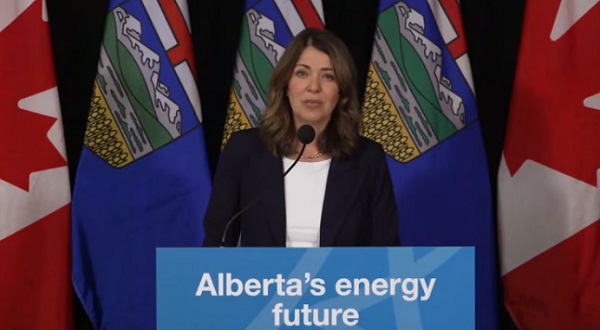
 Alberta2 days ago
Alberta2 days agoAlberta and Ottawa ink landmark energy agreement
-

 Energy2 days ago
Energy2 days agoPoilievre says West Coast Pipeline MOU is no guarantee
-
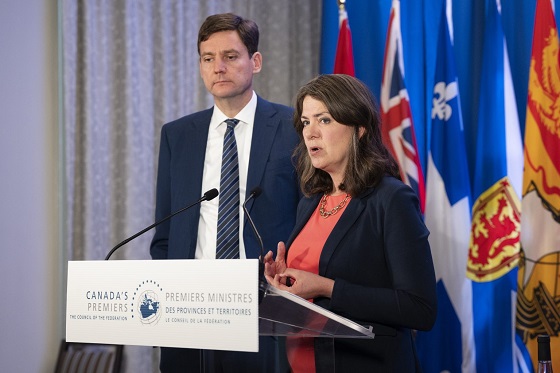
 Alberta2 days ago
Alberta2 days agoWest Coast Pipeline MOU: A good first step, but project dead on arrival without Eby’s assent
-

 Carbon Tax2 days ago
Carbon Tax2 days agoCanadian energy policies undermine a century of North American integration
-

 Business19 hours ago
Business19 hours agoHigher carbon taxes in pipeline MOU are a bad deal for taxpayers
-
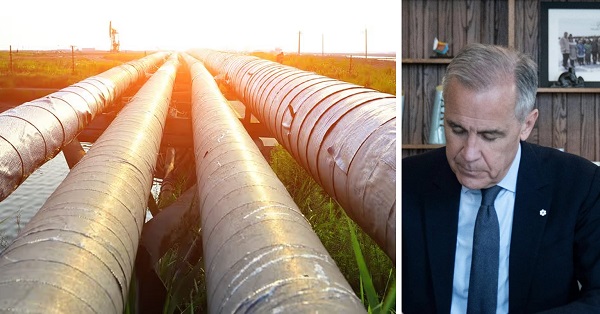
 Energy2 days ago
Energy2 days agoWill the New West Coast Pipeline MoU Lead to Results? Almost Certainly Not According to AI







